 1997 Daewoo Nubira Wagon (KLAJ) Dimensions, Size & Specs
1997 Daewoo Nubira Wagon (KLAJ) Dimensions, Size & SpecsMeasurements of the 1997 Daewoo Nubira Wagon, engineered for optimal performance and comfort
| Dimensions | |
|---|---|
| Length: | 4550 mm179.1 in14.9 ft |
| Width: | 1720 mm67.7 in5.6 ft |
| Height: | 1470 mm57.9 in4.8 ft |
| Trunk Capacity: | 412 liter14.5 cu ft |
| Trunk Capacity (Max): | 840-1448 liter29.7-51.1 cu ft |
| Weight Specifications | |
| Curb Weight: | 1140-1180 kg2513-2601 lbs |
| Maximal permitted Weight: | 1860 kg4101 lbs |
| Tire Specifications | |
| Rims Sizes: | 14-inch rims:
|
| Tire Size: |
|
The Daewoo Nubira Wagon (KLAJ) was produced between 1997 and 2001 and represents the station wagon iteration of the Nubira model line. This generation of the Nubira offers a practical and moderately sized estate car option, suitable for families and daily commuting with an emphasis on utility and comfort.
In terms of dimensions, the Nubira Wagon measures 4550 mm (179.1 inches) in length, 1720 mm (67.7 inches) in width, and stands 1470 mm (57.9 inches) tall. These measurements classify it as a compact wagon, providing ease of maneuverability in urban settings while still offering ample interior space. Its curb weight ranges between 1140 and 1180 kg (2513 to 2601 lbs), balancing lightweight construction for improved fuel efficiency with a sturdy build.
The vehicle’s maximum permissible weight is rated at 1860 kg (4101 lbs), accommodating passengers and cargo without compromising safety. Storage capacity is a strong advantage of the Nubira Wagon; it features a luggage compartment of 412 liters (14.5 cubic feet) with the rear seats in place. When the rear seats are folded down, luggage volume expands significantly, offering between 840 liters (29.7 cubic feet) up to a maximum of 1448 liters (51.1 cubic feet). This flexible cargo space makes the wagon ideal for carrying larger loads, sports equipment, or extended luggage.
Standard wheel and tire sizes include 5.5J x 14 rims paired with 185/65 R14 tires, providing a good balance of ride comfort and road grip, suitable for everyday driving conditions.
Overall, the Daewoo Nubira Wagon (KLAJ) from 1997 to 2001 delivers a well-rounded package with practical dimensions, balanced weight, and versatile cargo capacity, making it a dependable choice in the station wagon segment for its production era.
Discover the standout features that make the 1997 Daewoo Nubira Wagon a leader in its class
Have a question? Please check our knowledgebase first.
The Daewoo Nubira Wagon (KLAJ) produced between 1997 and 2001 has a length of 4550 mm (179.1 inches), a width of 1720 mm (67.7 inches), and a height of 1470 mm (57.9 inches). These dimensions position it firmly within the compact station wagon segment, providing a balanced footprint that suits urban and suburban driving. Its overall size ensures sufficient interior space while maintaining maneuverability and ease of parking.
The curb weight of the Daewoo Nubira Wagon (KLAJ) ranges between 1140 and 1180 kg (2513 to 2601 lbs), depending on specific trim and equipment. The maximum gross vehicle weight capacity is 1860 kg (4101 lbs). This weight range ensures the vehicle maintains stable handling and good fuel efficiency while offering a practical payload capacity for passengers and cargo, making it versatile for everyday use.
With all rear seats in their standard upright position, the Daewoo Nubira Wagon offers a luggage capacity of 412 liters (14.5 cubic feet). When the rear seats are folded down, this capacity expands significantly, ranging from 840 liters (29.7 cubic feet) up to 1448 liters (51.1 cubic feet), depending on how the folding is configured. This flexibility allows for transporting larger or bulkier items, making this station wagon practical for family trips or large shopping hauls.
Yes, the Daewoo Nubira Wagon fits comfortably into a standard residential garage. With a maximum length of 4550 mm (179.1 inches), width of 1720 mm (67.7 inches), and height of 1470 mm (57.9 inches), it occupies typical garage spaces without difficulty. Standard garages usually have door openings around 2400 mm (94.5 inches) wide and a depth of about 5400 mm (212.6 inches), so the Nubira leaves enough clearance for easy entry, exit, and some room for maneuvering.
The Daewoo Nubira Wagon (KLAJ), produced from 1997 to 2001, succeeded the original Nubira models that were mostly sedan- or hatchback-based. The wagon body style introduced with the KLAJ generation offered increased length and height, enhancing cargo space and practicality. While exact predecessor wagon dimensions are unavailable due to model variations, the KLAJ station wagon advanced the family car market by offering more versatile interior volume and slightly increased wider track for better stability.
The Daewoo Nubira Wagon's length of 4550 mm (179.1 inches) and width of 1720 mm (67.7 inches) are competitive with other compact station wagons from the late 1990s, such as the Ford Focus Wagon and Volkswagen Golf Variant. Its luggage capacity, especially with rear seats folded (up to 1448 liters or 51.1 cubic feet), also stacks well. However, the Nubira offers a slightly more affordable option with respectable interior space, making it a practical choice within its segment.
The Daewoo Nubira Wagon (KLAJ) comes fitted with rims sized 5.5J x 14 inches, paired with tires sized 185/65 R14. This tire dimension balances ride comfort, handling, and fuel efficiency while maintaining good road grip typical of compact station wagons. The relatively modest wheel size contributes to tire replacement affordability and suitability for various road conditions encountered in urban and suburban driving.
The interior of the Nubira Wagon (1997-2001) provides comfortable seating for up to five passengers, offering adequate headroom and legroom commensurate with its exterior dimensions. The slightly taller height compared to typical sedans in the category offers an airy feel. The car was designed with practicality in mind, catering to families and individuals needing both passenger comfort and cargo flexibility.
Compared to the Nubira sedan models of the same era, the Nubira Wagon offers significantly increased cargo versatility due to its extended rear hatch and folding rear seats. This increases luggage capacity from a modest 412 liters (14.5 cubic feet) to a hefty 1448 liters (51.1 cubic feet) with seats folded down. Additionally, the wagon format provides easier loading access, making it ideal for families or those carrying bulky items regularly.
Yes, the Daewoo Nubira Wagon (KLAJ) was produced from 1997 to 2001. Afterward, the Nubira line was succeeded by newer models like the Daewoo Lacetti, which featured modernized styling, updated engineering, and enhanced dimensions. The transition reflected market trends toward more refined compact vehicles with upgraded features, safety equipment, and improved interior quality.
Discover similar sized cars.
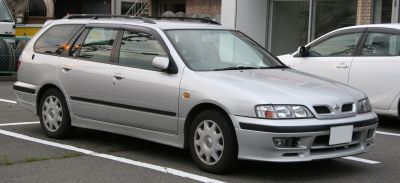
| Production: | 1998-2002 |
|---|---|
| Model Year: | 1998 |
| Length: | 4516-4579 mm177.8-180.3 in |
| Width: | 1715 mm67.5 in |
| Height: | 1450 mm57.1 in |
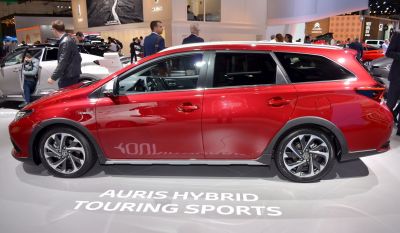
| Model Year: | 2015 |
|---|---|
| Length: | 4595 mm180.9 in |
| Width: | 1760 mm69.3 in |
| Height: | 1485 mm58.5 in |
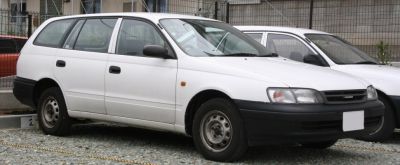
| Production: | 1992-1997 |
|---|---|
| Model Year: | 1992 |
| Length: | 4545 mm178.9 in |
| Width: | 1695 mm66.7 in |
| Height: | 1450-1470 mm57.1-57.9 in |
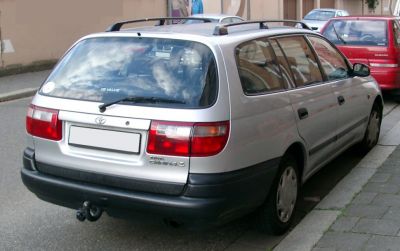
| Production: | 1993-1998 |
|---|---|
| Model Year: | 1993 |
| Length: | 4545 mm178.9 in |
| Width: | 1695 mm66.7 in |
| Height: | 1470 mm57.9 in |
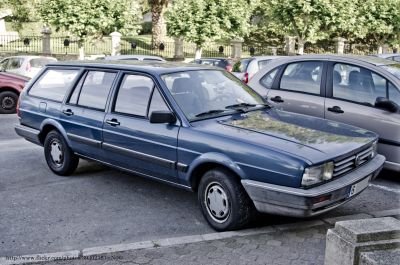
| Production: | 1980-1989 |
|---|---|
| Model Year: | 1981 |
| Length: | 4545 mm178.9 in |
| Width: | 1695 mm66.7 in |
| Height: | 1385-1465 mm54.5-57.7 in |
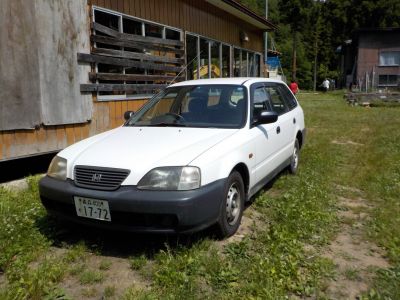
| Production: | 1996-2004 |
|---|---|
| Model Year: | 1996 |
| Length: | 4570 mm179.9 in |
| Width: | 1695 mm66.7 in |
| Height: | 1465 mm57.7 in |

| Production: | 2001-2004 |
|---|---|
| Model Year: | 2002 |
| Length: | 4550 mm179.1 in |
| Width: | 1700-1720 mm66.9-67.7 in |
| Height: | 1430 mm56.3 in |
